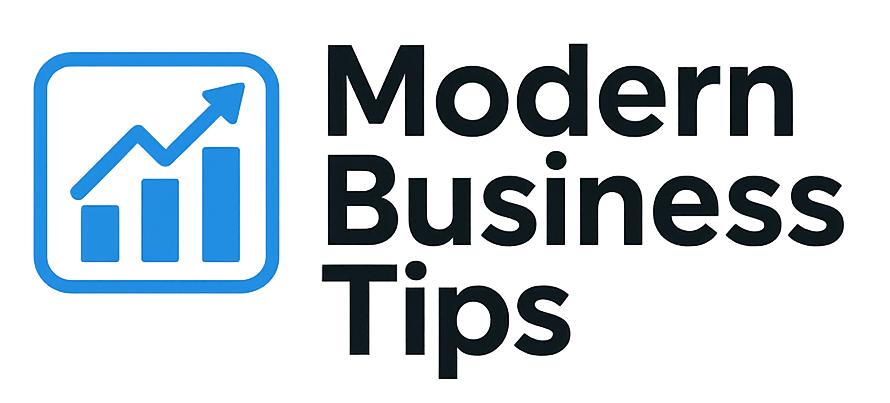Ever thought about turning your hobby into a booming online shop? With more people shopping online, now is the perfect time to start your e-commerce business. This guide will show you how to start a successful online store. You’ll learn the basics and how to keep track of your business’s performance.
You’ll find out how to handle the online market’s challenges. You’ll also learn how to meet customer needs and stand out from the competition.
This detailed guide will give you the knowledge to start your own business. You’ll learn how to reach customers worldwide with little initial investment. Are you ready to start this exciting adventure?
Key Takeaways
- Understanding the foundations of e-commerce is key to success.
- Knowing your target audience is vital for marketing.
- Picking the right products is essential for your online store.
- A good business plan helps focus your efforts.
- Choosing the right e-commerce platform makes management easier.
- Following the law is important for your business’s future.
- Regularly checking your business’s performance helps improve it.
Understanding E-commerce Fundamentals
E-commerce is changing how businesses meet customers. It makes buying easier and reaches more people. Knowing e-commerce basics is key to success online.
What is E-commerce?
E-commerce means buying and selling online. It lets people shop from home, making it quick and easy. This shift has changed how we shop, moving us towards digital buying.
The Different Types of E-commerce Models
It’s important to know the different e-commerce types. Here are the main ones:
| Type of E-commerce | Description | Examples |
|---|---|---|
| Business-to-Consumer (B2C) | Companies sell directly to consumers. | Amazon, Walmart |
| Business-to-Business (B2B) | Businesses sell to other businesses. | Alibaba, Shopify |
| Consumer-to-Consumer (C2C) | Consumers sell to other consumers, often through platforms. | eBay, Craigslist |
| Consumer-to-Business (C2B) | Individuals sell products or services to businesses. | Freelancer platforms, Etsy |
Key Terms to Know in E-commerce
Knowing e-commerce terms helps you understand the market better. Some important ones are:
- Shopping Cart: A software application that allows customers to select and purchase products online.
- Payment Gateway: A service that processes credit card and other payments for online businesses.
- Conversion Rate: The percentage of visitors who complete a desired action, such as making a purchase.
Researching Your Market and Audience
Understanding your target audience is key to e-commerce success. This section will show you how to find out who might buy from you. You’ll learn about market research and competitive analysis.
Identifying Your Target Audience
Knowing who to sell to is essential. Start by looking at demographics like age, gender, and where they live. Use tools like Google Analytics and social media to see what they like and do.
Surveys can give you direct feedback. Focus groups offer deeper insights into what people really need.
Conducting Market Research
Market research helps you understand what people want and what’s trending. You can use online surveys, interviews, and look at sales data. Tools like SurveyMonkey and Qualtrics help collect data.
Also, watch online trends with Google Trends. This shows you what’s popular with your audience.
Analyzing Competitors
Looking at what others do can help you stand out. Check their products, prices, and marketing. SEMrush and Ahrefs can help you see what’s online.
By knowing what your competitors do well and not so well, you can find ways to be different.
Choosing the Right Products to Sell
Choosing the right products is key when starting an e-commerce business. Success depends on finding products that appeal to your target audience. This guide will help you find profitable niches, learn about product sourcing, and check demand to meet market needs.
Finding Profitable Niches
To find profitable niches, do thorough market research. Look for gaps and opportunities. Understanding consumer behavior and trends is important. Here are some ways to find profitable niches:
- Explore emerging trends on Google Trends.
- Use social media to see what’s popular.
- Join forums and niche communities for direct feedback.
Sourcing Products: Wholesale vs. Dropshipping
Knowing your product sourcing options is essential. You can buy wholesale or use dropshipping. Each method has pros and cons that affect your strategy. Here’s a comparison:
| Aspect | Wholesale | Dropshipping |
|---|---|---|
| Initial Investment | Higher upfront costs for bulk purchases. | Low upfront costs; pay for products after sale. |
| Inventory Management | You handle inventory, which can be a challenge. | No inventory management needed; suppliers ship directly. |
| Profit Margins | Higher profit margins with bulk buying. | Lower profit margins due to supplier markups. |
| Shipping Responsibilities | You manage shipping logistics. | Supplier handles shipping to customers. |
Evaluating Product Demand
After choosing products, it’s important to check demand. Use tools like keyword research and sales data. Here are some methods:
- Analyze search volume for keywords to see interest.
- Look at competitor sales and reviews for demand.
- Do surveys to understand customer preferences.
Developing a Business Plan
A solid business plan is key for your e-commerce business. It gives you direction and clarity. Without it, e-commerce can be tough to navigate. Your plan should outline your vision and guide you in the market.
The Importance of a Business Plan
A good business plan is vital for e-commerce planning. It helps you make better decisions and stand out. Investors look for solid plans, showing you’re serious and forward-thinking. A well-made plan boosts your credibility and can help get funding.
Key Components of Your Business Plan
Your plan should cover all your e-commerce needs with these sections:
- Market Analysis: Know your competition and market trends.
- Marketing Strategies: Explain how you’ll promote and reach customers.
- Financial Projections: Show expected income, costs, and when you’ll break even.
- Operational Plan: Describe how your business will run smoothly every day.
Setting Realistic Goals and Metrics
Setting goals is key to tracking your e-commerce’s progress. Make sure your goals are specific, measurable, achievable, relevant, and timely (SMART). Use key performance indicators (KPIs) to check your success and adjust as needed. Realistic goals help you stay on track and improve your strategies.
Selecting an E-commerce Platform
Choosing the right e-commerce platform is key to a successful online business. Many platforms meet different needs. It’s important to know what each offers to make the best choice for your store.
Popular E-commerce Platforms to Consider
Several e-commerce platforms can make your online business run smoothly. Think about Shopify, WooCommerce, and BigCommerce. Each has its own strengths:
- Shopify: Known for its easy-to-use interface and wide range of tools.
- WooCommerce: A favorite for WordPress users, it offers lots of customization options.
- BigCommerce: Great for bigger businesses with lots of built-in features.
Comparing Features and Pricing
When comparing platforms, look at pricing, customization, and payment options. Each platform has different pricing based on its features. Knowing this helps you find one that fits your budget.
| Platform | Pricing | Customization Options | Payment Processing |
|---|---|---|---|
| Shopify | Starts at $29/month | High | Over 100 options |
| WooCommerce | Free + hosting costs | Very High | Varies by payment gateway |
| BigCommerce | Starts at $29.95/month | Moderate | Multiple options available |
User Experience and Support
Think about how easy the platform is to use. A user-friendly interface can boost customer satisfaction and sales. Also, check the level of customer support. Good support can help solve problems quickly.
Designing Your Online Store
The design of your online store is key to keeping customers happy and coming back. A good design makes shopping easy and fun. It’s important to make your store easy to use and look good.
Your store’s look and feel should match your brand. This helps customers feel connected to your brand. Also, making sure your store works well on phones is a must.
Importance of User-Friendly Design
A design that’s easy to use makes shopping a breeze. Customers can find what they need fast. Here are some key points for a user-friendly design:
- Intuitive navigation: Make it easy to find what you’re looking for.
- Fast loading times: Quick pages keep customers happy.
- Simple checkout process: Few steps means less hassle.
By focusing on these, you can make your store better. This leads to more sales and happy customers.
Choosing Themes and Templates
Choosing the right theme and template is important. They should look good and work well. Here’s what to think about:
- Brand alignment: Your theme should show off your brand.
- Customization options: Pick themes that are easy to change.
- Responsive design: Make sure it looks good on all devices.
Optimizing for Mobile Devices
More people are shopping on their phones. So, making your store mobile-friendly is key. Here’s how to do it:
- Responsive layout: Your site should work on all screen sizes.
- Touch-friendly design: Make sure it’s easy to use with your fingers.
- Fast loading speeds: Make your site quick to load on phones.
By focusing on mobile, you make your store better. This also helps your site rank higher in search results.
Setting Up Payment and Shipping Options
Having good payment and shipping systems is key for your e-commerce success. You should offer many payment options to meet your customers’ needs. This makes transactions fast and easy. Choosing the right payment gateway improves user experience and builds trust.
Understanding Payment Gateways
Payment gateways handle online payments safely. When picking one, look at fees, ease of use, and currency support. PayPal, Stripe, and Square are well-liked. A good gateway ensures smooth payments, making customers happy.
Shipping Solutions for E-commerce
Your shipping plan affects how customers feel. Look into local and international shipping options. Offer choices like standard, expedited, and free shipping. Clear policies help manage expectations, making shopping better.
Creating an Efficient Fulfillment Process
Streamlining your order process is vital. Check your warehouse, inventory, and staff to improve workflow. Automating tracking and updates saves time and cuts down on mistakes. A strong fulfillment process lets you grow your business while keeping customers happy.
Marketing Your E-commerce Business
Effective marketing is key to making your e-commerce business stand out. You need a strong brand identity that speaks to your audience. Social media is a great way to promote your business, bringing in more customers and sales.
Building a Strong Brand Identity
A clear brand identity is the base of your marketing strategy. It shows your values and what makes you different. A good brand story can connect with customers on an emotional level.
Brands that succeed spend time defining their voice and visuals. They make sure their message is consistent everywhere.
Utilizing Social Media for Promotion
Social media is a powerful tool for e-commerce. Sites like Instagram and Facebook let you show off products and talk to customers. Shareable content and contests can help your brand grow.
By regularly talking to your followers, you build loyalty. This turns casual fans into loyal customers.
Investing in SEO and Paid Advertising
SEO makes your site more visible in search results. It involves using the right keywords and getting backlinks. Paid ads, like Google Ads, can quickly bring in more visitors.
A mix of paid and organic strategies works best. For tips on setting up your e-commerce site, check out this resource.
| Marketing Strategy | Advantages | Considerations |
|---|---|---|
| Social Media Marketing | Increased engagement, brand awareness | Time-intensive, requires regular updates |
| SEO | Long-term traffic growth, cost-effective | Slow to show results, requires continuous updates |
| Paid Advertising | Immediate visibility, targeted reach | Can become expensive, requires budget management |
Combining these strategies into a single plan boosts your e-commerce business. Focus on your brand, use social media, and invest in SEO and ads. This will improve your store’s performance.
Understanding Legal Requirements
Knowing the legal rules of e-commerce is key to keeping your business in line. You need to get the right e-commerce licenses and permits to operate legally. Each state has its own rules, so it’s important to research well before starting your online store.
Business Licenses and Permits
Starting an e-commerce business needs specific licenses and permits. These depend on your business type and where you are. You might need general business licenses, sales tax permits, and local permits. Knowing about these e-commerce licenses can help avoid big mistakes. Make sure to check with local authorities to meet all rules.
Taxes and Compliance Issues
Taxes are a big part of e-commerce. Different places have different tax laws, so it’s important to understand them. You need to know about sales tax, which can change based on where you sell. Following tax rules helps avoid fines and keeps your finances running smoothly. For more help, you can look at e-commerce laws.
Protecting Your Intellectual Property
Your intellectual property, like trademarks and copyrights, is very important. Not protecting your brand can lead to legal problems. Registering your trademarks helps keep your brand safe from copying. This step helps keep your brand strong and visible in the market. It’s important to learn how to protect your intellectual property, as it’s the heart of your business.
Following these legal requirements sets a strong base for your e-commerce business. Knowing about licenses, taxes, and intellectual property helps you deal with any challenges that come up.
Analyzing and Optimizing Your Performance
Keeping an eye on your e-commerce performance is key to lasting success. Analytics tools offer insights into customer behavior and sales trends. This data helps you make smart decisions to grow your business.
These tools show you what’s working and what needs work. This lets you tweak your strategies for better results.
Using Analytics Tools for Insights
Google Analytics is a great tool for tracking important metrics. It shows you where your traffic comes from, how many people convert, and how engaged your customers are. This info helps you see which products are hits and understand your customers better.
With this data, you can craft marketing campaigns that speak directly to your audience. This makes shopping more enjoyable for them.
A/B Testing for Improvements
A/B testing is a smart way to fine-tune your e-commerce plan. It involves trying out different versions of your site, content, or emails to see what works best. This method helps you improve user experience and increase sales.
By focusing on what works, you can make your site more effective. This leads to stronger business growth.
Planning for Growth and Scalability
As your business grows, planning for the future is essential. Look at your current systems and processes to see where you can improve. This ensures your e-commerce platform can handle more traffic and seize new chances in the market.



